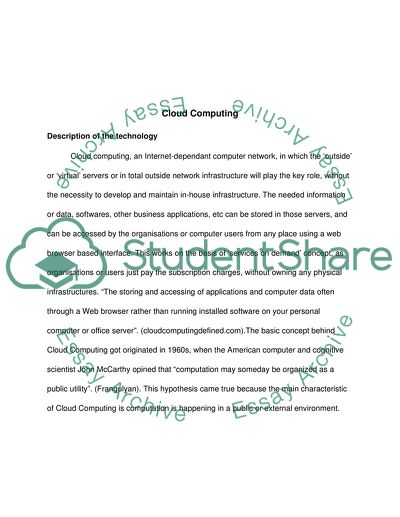Cite this document
(“The Effect of Cloud Computing on Network Management Essay”, n.d.)
The Effect of Cloud Computing on Network Management Essay. Retrieved from https://studentshare.org/information-technology/1743879-the-effect-of-cloud-computing-on-network-management
The Effect of Cloud Computing on Network Management Essay. Retrieved from https://studentshare.org/information-technology/1743879-the-effect-of-cloud-computing-on-network-management
(The Effect of Cloud Computing on Network Management Essay)
The Effect of Cloud Computing on Network Management Essay. https://studentshare.org/information-technology/1743879-the-effect-of-cloud-computing-on-network-management.
The Effect of Cloud Computing on Network Management Essay. https://studentshare.org/information-technology/1743879-the-effect-of-cloud-computing-on-network-management.
“The Effect of Cloud Computing on Network Management Essay”, n.d. https://studentshare.org/information-technology/1743879-the-effect-of-cloud-computing-on-network-management.


